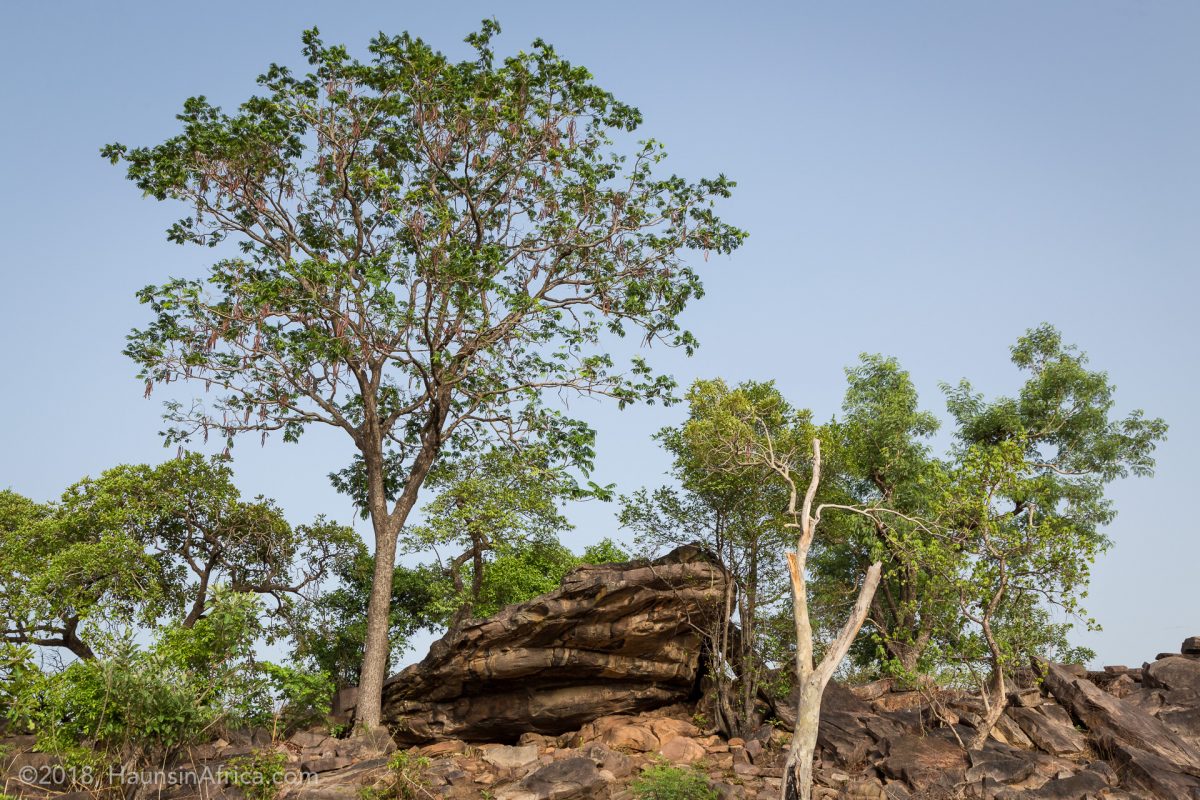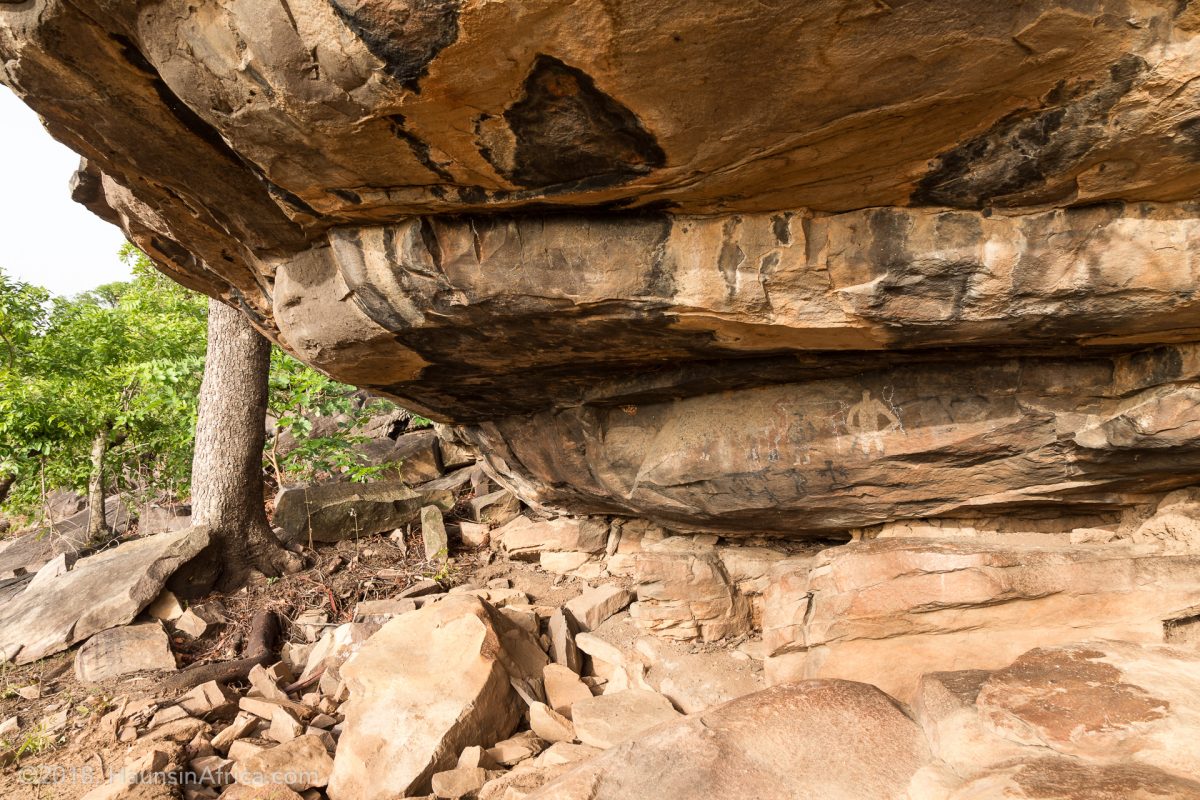I first learned about the rock paintings at Jilik when I read Mr. Mahmoud Malik Saako’s paper on the subject of promoting the sites as tourist destinations in Northern Ghana. He identified the site as Tang-piok and said it was near Bunkpurugu and Gilik. After studying Google Maps, I found a village named Jilik not far from Bunkpurugu and decided to go there.
Upon arriving, I asked the first young man I saw if he knew of any “God writing” on rocks nearby. He pointed up a steep hill and told me to follow the path.


The ancient artwork is almost as impressive as that found at Kpatiritinga. The paintings are fewer in number but very distinct. They also focus more on human figures and activities. You can identify men hunting a crocodile with spears (or guns?) and several people standing with their hands on their hips.
Below is an interactive 360 image:



Two of the larger figures standout as one looks like a black person with white boots and the other a white person with black boots. Unfortunately, you can also see that local kids have taken chalk and drawn overtop of the ancient art. One must also wonder if someone altered the original drawings at some point. Were they “upgraded” to show boots and a white man?


Like northern Ghana’s rock art at Gingana, Tusugu and Kpatiritinga, it is impossible to know who created this and when they did it. For now and the foreseeable future, it remains a mystery.


Note: Orthography is always a big challenge in the identification of places in West Africa. The official spelling of this village is “Jilik” however being right near the border of French-speaking Togo it could easily be assumed to be “Gilik.” But the Mamprusi spelling would be “Gyilik.” Then you have the challenge of different locals giving it different names. In writings by the staff of the Ghana Museums and Monuments Board it has been identified as Tanfiok, Tanpiok, Tang-piok, and Naamaa. In our last correspondence they seem to have settled on Tanfiok-Naamaa for their records.